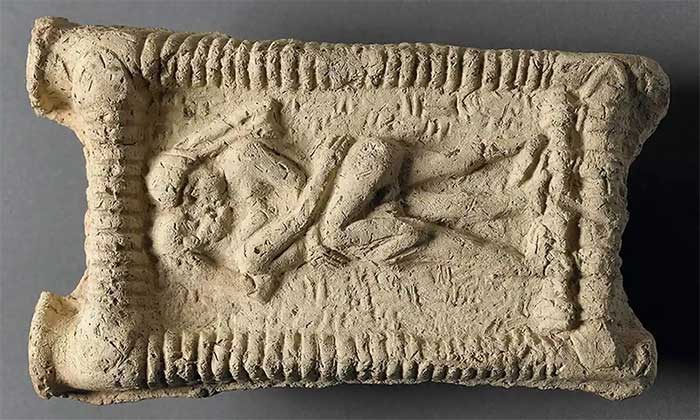According to researchers, the earliest recorded instance of human kissing dates back about 4,500 years in ancient Mesopotamia, which is 1,000 years earlier than previously estimated.
Recent studies have provided evidence that people in some of the earliest societies in Mesopotamia engaged in the act of kissing. This behavior was documented in ancient texts dating back to 2500 BCE.

Ancient Mesopotamian clay tablet documenting kissing. (Photo: University of Copenhagen/PA).
In a paper published in the journal Science, researchers cited evidence suggesting that kissing may have contributed to the spread of oral-transmitted diseases.
Based on this new finding, researchers believe that kissing was, in fact, considered a common practice among many ancient cultures, symbolizing intimacy in romantic relationships, rather than originating from a specific region as previously thought.
For instance, an earlier hypothesis suggested that the earliest evidence of kissing came from the region of modern-day India around 1500 BCE.
Ancient Mesopotamian texts indicate that while couples during this period engaged in kissing, it was also often regarded as a sign of desire among unmarried individuals.
Dr. Troels Pank Arbøll, a historian of medicine in Mesopotamia at the University of Copenhagen in Denmark, noted that in ancient Mesopotamia—referring to the early cultures situated between the Euphrates and Tigris rivers in present-day Iraq and Syria—writing was done using cuneiform on clay tablets.
“Thousands of these clay tablets have survived to this day, and they contain clear examples that kissing was considered an intimate act of love in ancient times, as well as that kissing could be part of friendship and familial relationships,” Dr. Arbøll stated.




















































